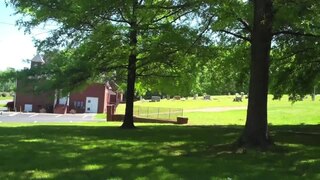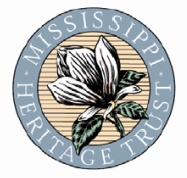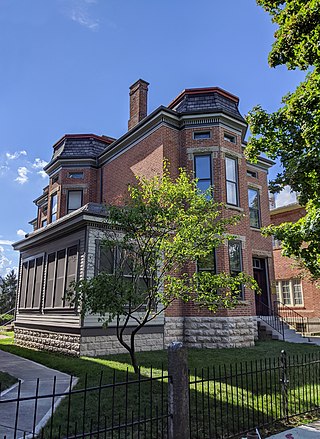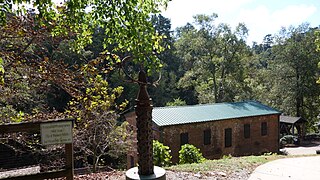
The National Trust for Historic Preservation is a privately funded, nonprofit organization based in Washington, D.C., that works in the field of historic preservation in the United States. The member-supported organization was founded in 1949 by congressional charter to support the preservation of America’s diverse historic buildings, neighborhoods, and heritage through its programs, resources, and advocacy.

Milledgeville is a city in and the county seat of Baldwin County in the U.S. state of Georgia. It is northeast of Macon, bordered on the east by the Oconee River. The rapid current of the river here made this an attractive location to build a city. It was the capital of Georgia from 1804 to 1868, including during the American Civil War. Milledgeville was preceded as the capital city by Louisville and was succeeded by Atlanta, the current capital. Today U.S. Highway 441 connects Milledgeville to Madison, Athens, and Dublin.

Mercer University is a private research university with its main campus in Macon, Georgia. Founded in 1833 as Mercer Institute and gaining university status in 1837, it is the oldest private university in the state and enrolls more than 9,000 students in 12 colleges and schools. Mercer is a member of the Georgia Research Alliance. It is classified as a "R2: Doctoral Universities — High research activity".

The Sweet Auburn Historic District is a historic African-American neighborhood along and surrounding Auburn Avenue, east of downtown Atlanta, Georgia, United States. The name Sweet Auburn was coined by John Wesley Dobbs, referring to the "richest Negro street in the world," one of the largest concentrations of African-American businesses in the United States.

The Rosenwald School project built more than 5,000 schools, shops, and teacher homes in the United States primarily for the education of African-American children in the South during the early 20th century. The project was the product of the partnership of Julius Rosenwald, a Jewish-American clothier who became part-owner and president of Sears, Roebuck and Company and the African-American leader, educator, and philanthropist Booker T. Washington, who was president of the Tuskegee Institute.

Joseph Neel Reid, also referred to as Neel Reid, was a prominent architect in Atlanta, Georgia, in the early 20th century as a partner in his firm Hentz, Reid and Adler.

America's 11 Most Endangered Places or America's 11 Most Endangered Historic Places is a list of places in the United States that the National Trust for Historic Preservation considers the most endangered. It aims to inspire Americans to preserve examples of architectural and cultural heritage that could be "relegated to the dustbins of history" without intervention.

The New Jersey Historic Trust was created by the State of New Jersey in 1967 to preserve New Jersey's historic resources. The Historic Trust's executive director is Dorothy P. Guzzo.

The Medical Arts Building is a Beaux-Arts style building located at the northern end of Downtown Atlanta. The 12-story brick and limestone building by architect G. Lloyd Preacher, also designer of Atlanta City Hall, was constructed in 1927. In addition to its medical facilities - deemed as some of the most modern and well-equipped when it opened, the building once featured a cafeteria, drugstore and telegraph office. It was also amongst the first to have a covered parking garage. However, its nearly 89,000 square feet (8,300 m2) of space have been vacant since 1995.

The Mississippi Heritage Trust (MHT) was established in 1992 as a non-profit preservation organization in the state of Mississippi. Its mission is to save and renew places meaningful to Mississippians and their history, which is accomplished by education, advocacy, and preservation. MHT is supported by private resources that include special funding events, membership fees, grants, and gifts. MHT is governed by a Board of Trustees, with day-to-day operation under the guidance of an Executive Director and staff located in Jackson, Mississippi.

Hentz, Reid & Adler was an architectural firm that did work in the U.S. state of Georgia. The firm is "known in the Southeast for their Beaux-Arts style and as the founding fathers of the Georgia school of classicism."

The Reid House at 1325-1327 Peachtree St., NE, in Atlanta, Georgia, known also as Garrison Apartments and as 1325 Apartments, was built as a luxury apartment building in 1924. It was the third luxury apartment building built in Atlanta. It received a $2 million renovation during 1974 and was converted to a luxury condominium building in 1975. The ten-story building was designed by architect Philip T. Shutze of architectural firm Hentz, Reid and Adler in Classical Revival architecture. The 1974 renovation was by architect Eugene I. Lowry.
The East Point Historic Civic Block consists of three historically significant buildings and one memorial park in downtown East Point, Georgia, and is located within the parameters of East Point Street, Linwood Avenue, Church Street, and West Cleveland Avenue. East Point's City Hall, City Auditorium, New Deal Library, and Victory Park make up the Civic Block, which since 2011 has been the focus of both redevelopment interest and historic preservation efforts.

The Macon Historic District is a historic district in Macon, Georgia that was listed on the National Register of Historic Places in 1974 and was expanded in 1995. The original listing covered 587 acres (238 ha) and included 1,050 contributing resources; the increase added 101 acres (41 ha) and 157 contributing resources.

Ellamae Ellis League, was an American architect, the fourth woman registered architect in Georgia and "one of Georgia and the South's most prominent female architects." She practiced for over 50 years, 41 of them from her own firm. From a family of architects, she was the first woman elected a Fellow of the American Institute of Architects (FAIA) in Georgia and only the eighth woman nationwide. Several buildings she designed are listed on the National Register of Historic Places (NRHP). In 2016 she was posthumously named a Georgia Woman of Achievement.

The Columbus Landmarks Foundation, known as Columbus Landmarks, is a nonprofit historic preservation organization in Columbus, Ohio. The foundation is best-known for its list of endangered sites in the city and its annual design award, given to buildings, landscapes, and other sites created or renovated in Columbus. It was established in 1977 as a project of the Junior League of Columbus, Ohio, following the demolition of the city's historic Union Station. It is headquartered at 57 Jefferson Avenue, a contributing structure in the Jefferson Avenue Historic District in Downtown Columbus.

The Roswell Historic District, in Roswell, Georgia in Fulton County, was listed on the National Register of Historic Places in 1974.

Mimosa Hall is a Greek Revival mansion in Roswell, Georgia, built in 1841. It is one of several historically significant buildings in the city and is a contributing property of the Roswell Historic District on the National Register of Historic Places.
























